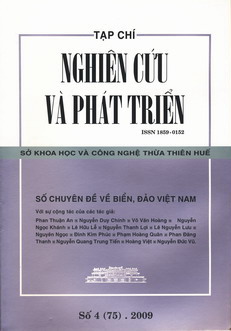“Đường lưỡi bò” trên biển Đông và luật quốc tế/The Chinese (Broken) U-shaped Line Over East Sea and International Marine Law
Tóm tắt
Yêu sách về “đường lưỡi bò” bắt đầu từ một bản đồ của tư nhân, sau đó được Cộng hòa Trung Hoa xuất bản lần đầu tiên vào năm 1948. Sau này, cả Đài Bắc và Bắc Kinh đều đã dựa vào bản đồ đó để biện minh cho yêu sách về chủ quyền trên biển Đông.
Bản chất thực sự của “đường lưỡi bò” vẫn đang bị bao phủ bởi sự bí ẩn, cả Trung Quốc và Đài Loan đều mập mờ với các tuyên bố không rõ ràng. Tuy nhiên, những hoạt động gần đây của Trung Quốc cho thấy, Trung Quốc thực tế đang yêu sách về chủ quyền với tất cả các vùng nước và tài nguyên nằm trong khu vực “đường lưỡi bò”.
Các học giả nước ngoài đã nhận xét rằng, yêu sách của Trung Quốc về “đường lưỡi bò” là không có cơ sở nào trong lịch sử, là trái với sự phát triển toàn diện của luật biển quốc tế hiện tại và không thể xem là một vấn đề pháp luật nghiêm chỉnh.
ABSTRACT
The request for a part of territory called “The Chinese (Broken) U-shaped Line” originates from a private map that later was published by the Republic of China for the first time in 1948. Afterwards both Taipei and Beijing admit that map officially to justify their request for their sovereignty over the East Sea.
In fact the truth of the requested territory is still covered by obscurity and statements from both Taiwan and China prove quite vague. However, the recent campaigns of China indicates that the nation is actually claiming its sovereignty over the waters and the resources included in “The Chinese (Broken) U-shaped Line”.
Foreign scholars remark that the Chinese request for the above part of territory is not supported by any historical foundation, and that it is against the overall development of the international law at present and can’t be regarded as a serious legal issue.

